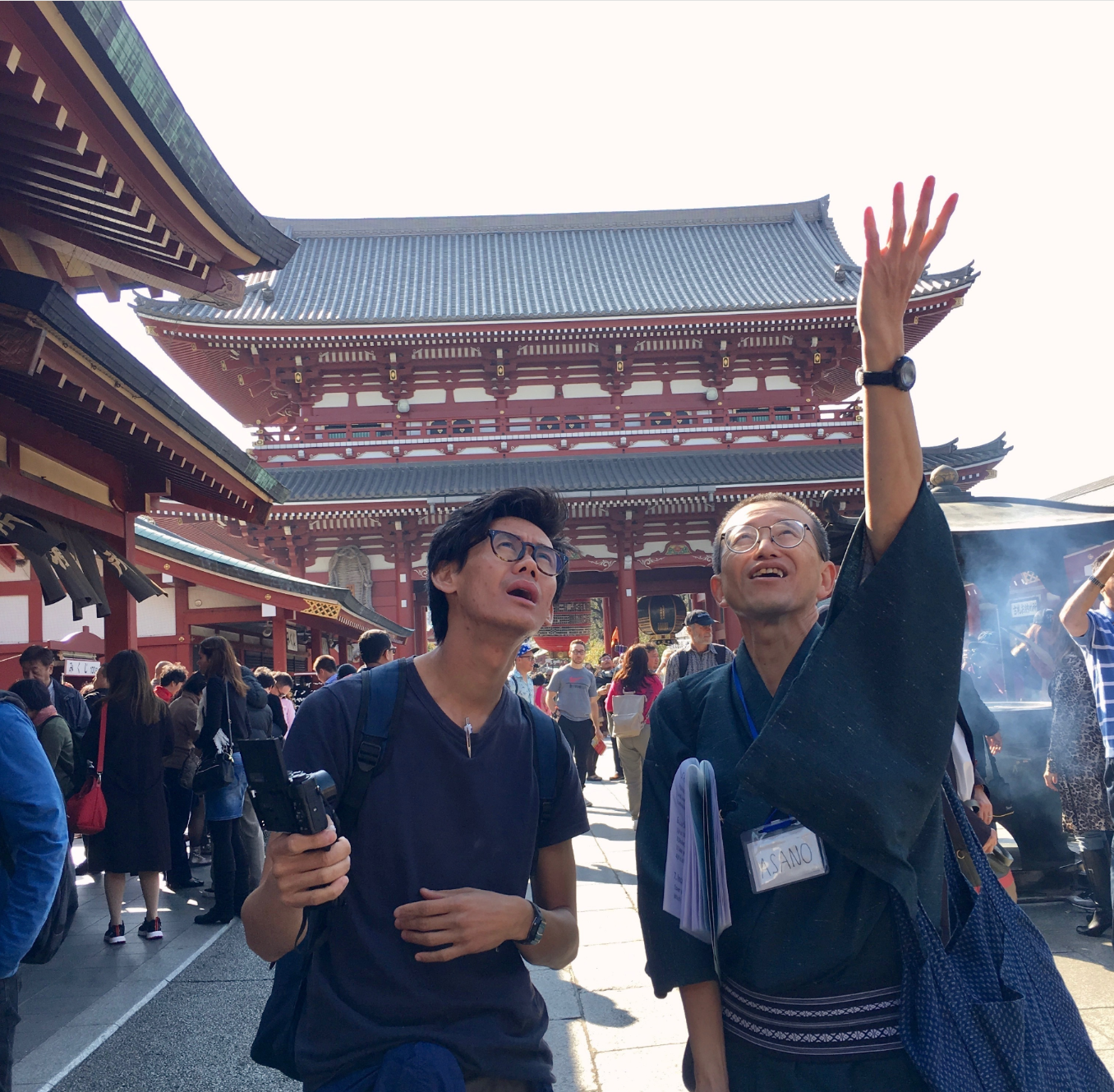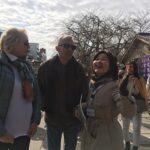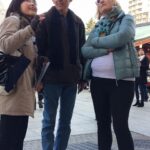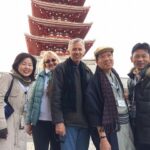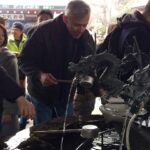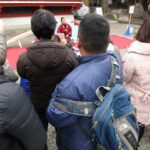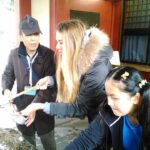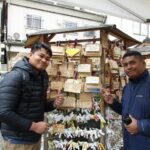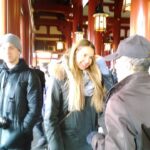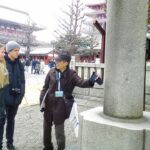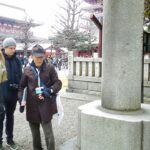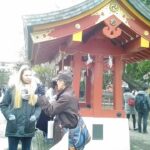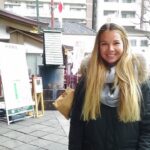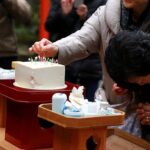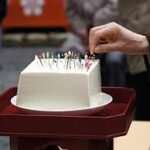On the day of Feb 11, with low temperature and clear sunny sky, we welcomed around six guests from different regions, Australia, Austria, Germany and Philippines.
After splitting these enthusiastic visitors into three, each group was assigned with a few guides who also loves this historical town and are honored to guide them.



Starting with introducing ourselves and giving our brief orientation about this tour, we went to Asakusa Information Center in order to see better views of the Asakusa areas.
This is because the rooftop of this building is high enough for us to enjoy breathtaking views.
The sceneries sighted from this location seemed like a pictured guidebook, which can catch visitor’s interests and notify the proper outlooks to their ideal spots from there.
Normally, our guides point out the direction of iconic spots, like Tokyo SkyTree, Smida River and particularly an eye-catching object like poop, which is fully painted in gold on the top of Asahi brewer building.
By the time we concluded our tour in the last location, Asakusa Shinto Shrine, which is adjacent to the Sensoji Buddhist temple, we were already surrounded by a lot of visitors amid the crowds of people proceeding to the compound shared with this Buddhist temple.

This time, it’s also our pleasure to post and notify you with one of the annual events held on Feb. 8th inside this Sensoji compound called Harikuyo.
Hari-Kuyo can be roughly translated to “needle offering” in English and it is the act of offering needles to a deity.
It is a kind of ritual held as a memorial at religious buildings like Buddhist Temples or Shinto Shrines.
The Hari-Kuyo event is annually held on February 8 or December 8 in different areas of Japan.
People involved in the sewing and apparel-making industries, who utilizes needles and pins in their work, offer their used or broken needles from the past year and pray to the gods in hopes of improving their skills and for a prosperous business in the future.
These devotees stick their prepared pins and needles into small slabs of tofu or konjac, which are set in the pray halls of religious compounds.
Tofu and Konjac are typical Japanese food, which are soft enough for anything to be stuck in to it.
These characteristics material symbolizes how dressmaking and apparelmaking worshippers show their gratitude and respect for their used pins. They show this by putting their needles to rest and calmness, through sticking the pins on the soft tofu which serves as a “bed” for their exhausted tools of their trade.
This is because these slender tools have devotedly helped sewing professionals create innovative and fashionable clothes and apparel.
In the past, this religious occasion was dominated by women who frequently used needles and pins in line with tirelessly conducting their household.
Nowadays, however, Hari-Kuyo is not only appealing to women, but also to everyone regardless of gender or religious belief.
Why don’t you join these unique ceremonies while staying in Japan?
(By Arac)

